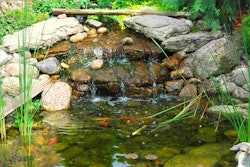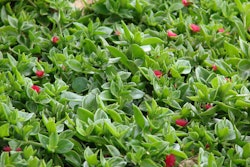 Photo: Nick Saltmarsh/Flickr
Photo: Nick Saltmarsh/FlickrSpinach has long been praised as a superfood, but scientists from the Massachusetts Institute of Technology have now gifted this edible with the ability to detect explosives in the environment.
Because plants are extremely sensitive to their environment, the researchers at MIT decided to see if they could tap into that potential and find a way to have the plants communicate what they were identifying.
“Plants are very environmentally responsive,” said Michael Strano, a chemical engineer at MIT and co-author of a paper on the research published in Nature Materials. “They know that there is going to be a drought long before we do. They can detect small changes in the properties of soil and water potential.
“If we tap into those chemical signaling pathways, there is a wealth of information to access.”
Strano worked with his team to create carbon nanosensors that could be tuned to be receptive to certain dangerous compounds such as hydrogen peroxide, TNT, and sarin, an odorless nerve gas.
The scientists used nanotubes designed to detect nitroaromatics, a class of explosive compounds, and painted a solution of them on spinach leaves. The sensors were then absorbed into the mesophyll, an area plants use for photosynthesis.
When the targeted molecules meet the carbon nanotube, it becomes bound with a polymer wrapped around the tube, changing the type of radiation it emits.
As a control, a set of spinach was embedded with nanotubes that did not detect explosives so a baseline of fluorescence could be established.
To test the sensors’ abilities, the spinach’s root system was exposed to water with nitroaromatic contaminants. After about 10 minutes, the nanotubes began to give off a different infrared light, indicating the presence of explosives.
“Our paper outlines how one could engineer plants like this to detect virtually anything,” Strano told the BBC. “The plants could be used for defense applications, but also monitor public spaces for terrorism related activities, since we show both water and airborne detection. Such plants could be used to monitor groundwater seepage from buried munitions or waste that contains nitroaromatics.”
While the scientists used spinach in the study, Strano said that these techniques can be applied to any living plant.










